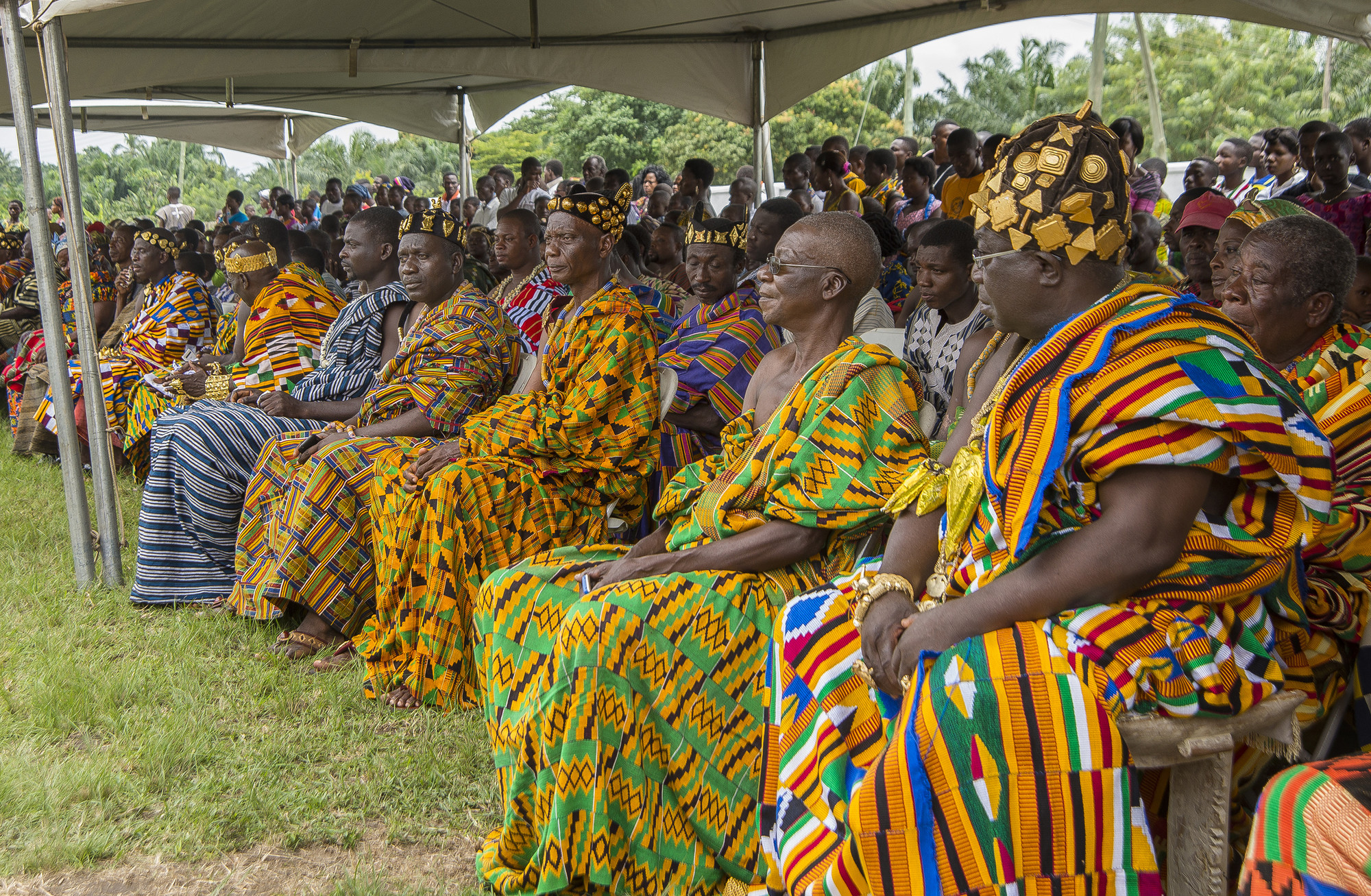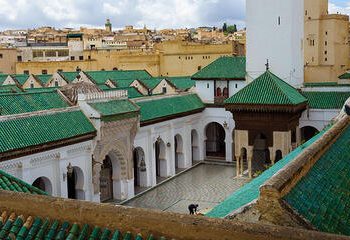Kente cloth in Ghana is one vibrant tapestry of Ghanaian culture, one cannot overlook the resplendent beauty and historical significance of Kente cloth in Ghana.
Also, renowned for its intricate patterns and vibrant colors, Kente cloth holds a treasured place in Ghana’s heritage.
In this blog article, we will delve into the fascinating history, cultural symbolism, and contemporary significance of Kente cloth, offering a captivating exploration of this iconic Ghanaian textile.
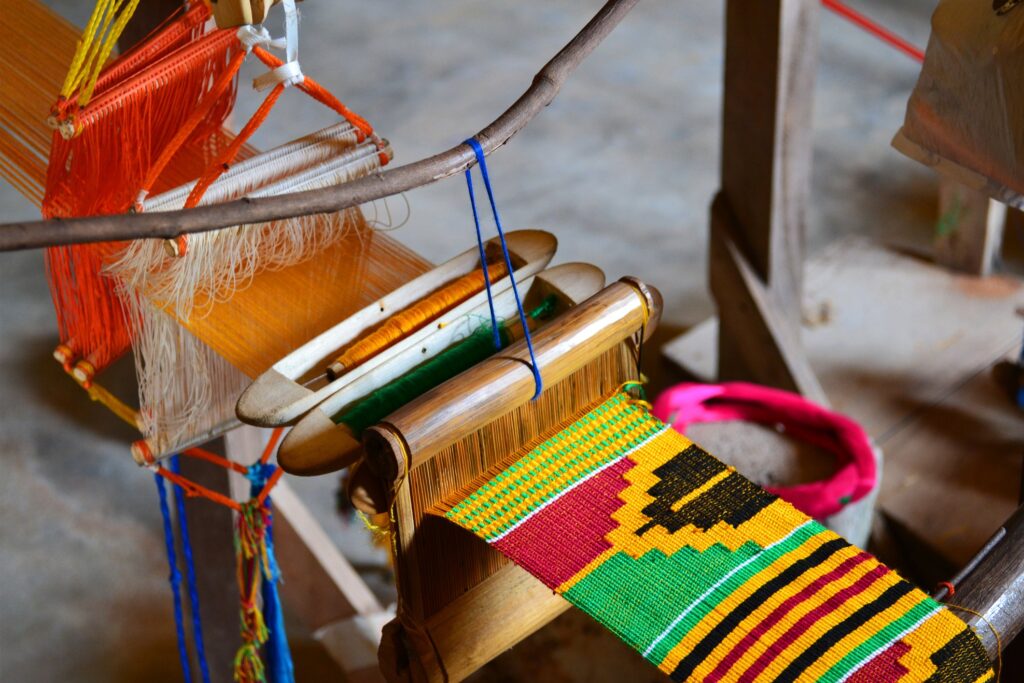
The Origins of Kente Cloth
Kente cloth traces its roots back over 400 years to the Ashanti Kingdom, a powerful empire in present-day Ghana. It emerged as a symbol of prestige and cultural identity among the Ashanti people, serving as attire exclusively reserved for royalty and special occasions.
Legend of Anansi the Spider:
According to oral tradition, Kente cloth was inspired by Anansi, a cunning spider from Ashanti folklore. Anansi is believed to have taught weavers how to create intricate patterns by observing his intricate web designs, thus infusing spiritual and storytelling elements into the fabric.
The Art of Kente Weaving
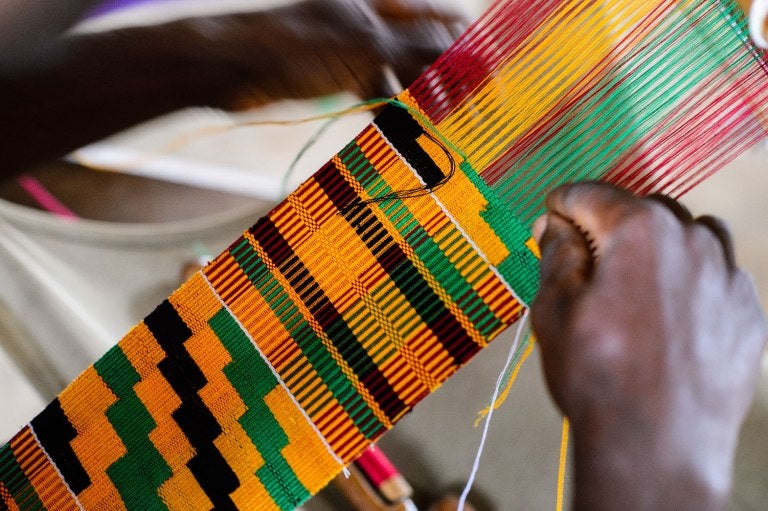
Highly skilled artisans in Ghana carry out the traditional weaving of the Kente cloth because it requires a labour-intensive process.
Furthermore, these weavers meticulously intertwine colorful silk threads to create vibrant patterns, often incorporating complex geometric designs and symbolic motifs.
Symbolism in Every Thread
Beyond its aesthetic appeal, Kente cloth is a visual language that tells stories and conveys messages.
Adinkra Symbols
Kente cloth often features Adinkra symbols, ancient West African symbols imbued with profound meaning. These symbols represent concepts such as wisdom, unity, resilience, and spirituality, providing a cultural tapestry woven into the fabric.
Color Symbolism
Each color used in Kente cloth holds symbolic significance. For instance, gold represents royalty and wealth, while red signifies power and spirituality. The combination of colors in a Kente design reflects the occasion, social status, or personal identity of the wearer.
Contemporary Significance of Kente Cloth:
Over the centuries, Kente cloth transcends its historical origins and becomes a powerful emblem of Ghanaian culture on a global scale.
National Identity and Pride
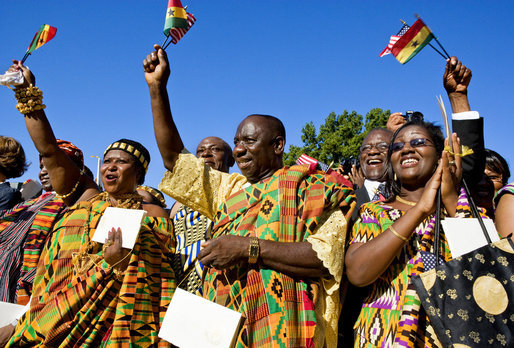
Kente cloth embraces a symbol of national identity, representing the rich cultural heritage of Ghana. It is proudly worn by Ghanaians during significant events, such as festivals, weddings, and ceremonies, serving as a visual expression of pride and tradition.
Global Influence
Transition: Kente cloth has captivated the world, making its mark on the global fashion and design scene.
Runways and Red Carpets
Renowned designers have incorporated Kente cloth into their collections, showcasing its beauty and cultural significance on prestigious fashion runways and red carpets worldwide.
Kente Cloth in GhanaCultural Exchange
Kente cloth sparks a cross-cultural collaboration and exchange, promoting intercultural understanding and appreciation for Ghanaian traditions and craftsmanship.
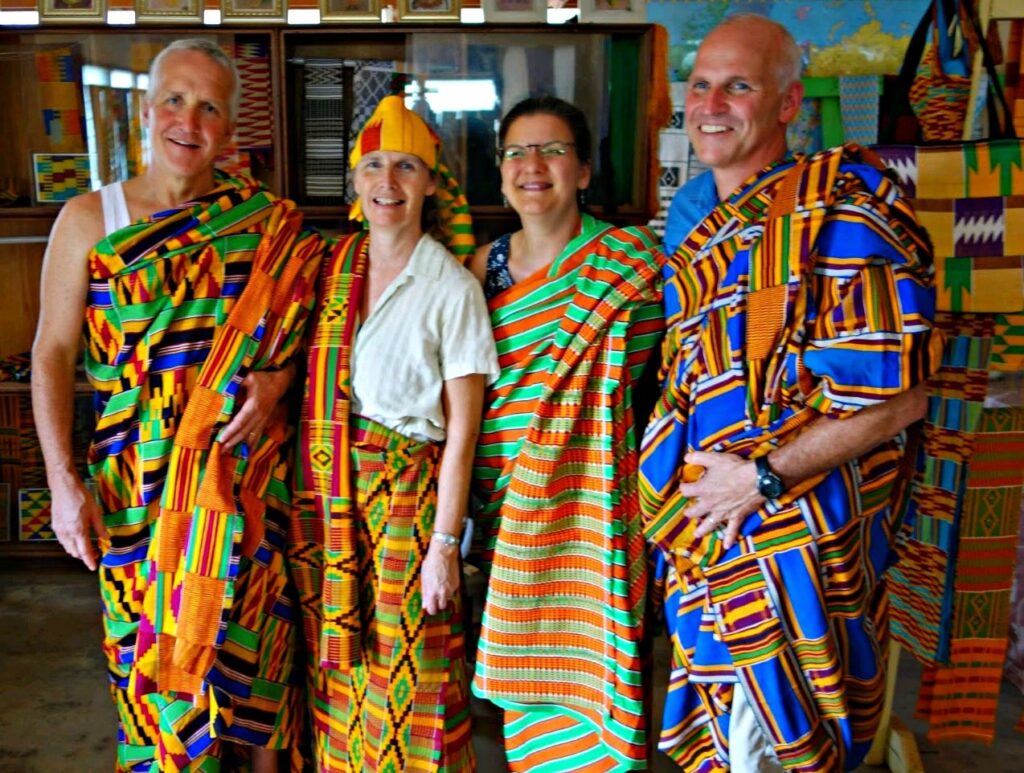
Conclusion
In conclusion, the captivating journey through the history and significance of Kente cloth reveals its enduring cultural value and global influence.
As the threads intertwine, Kente cloth weaves a narrative of Ghanaian heritage, uniting tradition, craftsmanship, and artistic expression. Its intricate patterns and vibrant colors convey stories, preserve cultural identity, and inspire generations to embrace their roots.
From royal courts to global runways, Kente cloth continues to remain aesthetic art.

